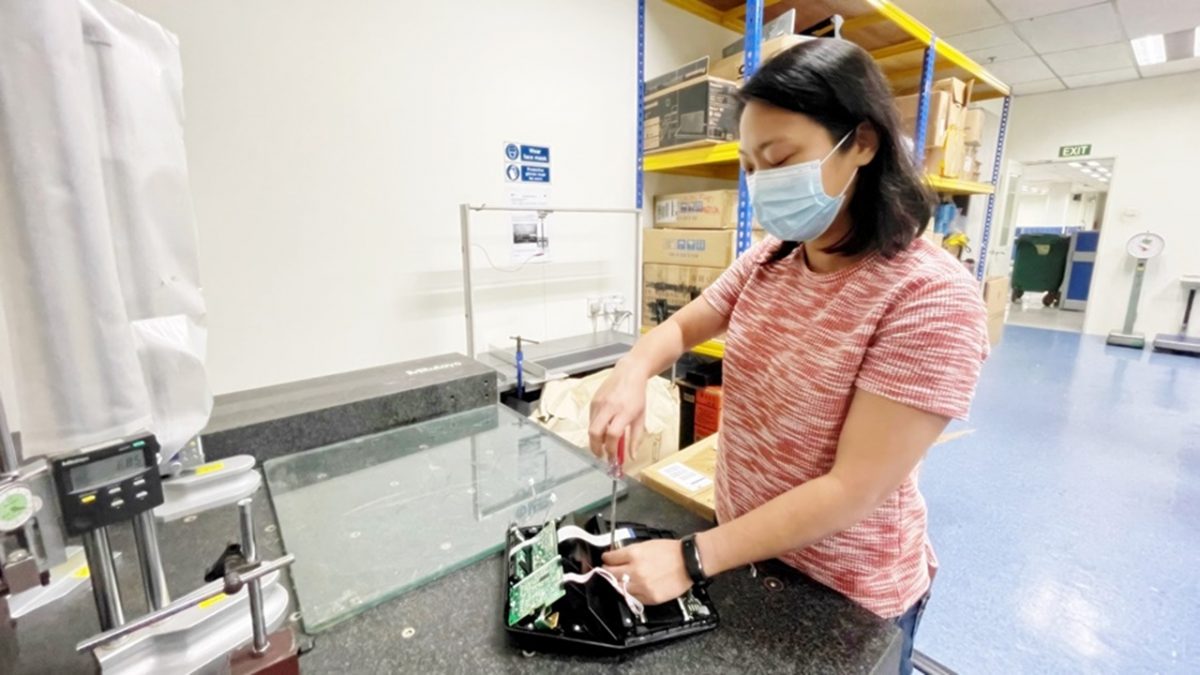Adda Wong, 44, has always been good with her hands. She enjoys tinkering with things and figuring out how they work.
As a senior engineer at Panasonic Appliances R&D Center Singapore (PAPRADSG), she gets to indulge her interests in working on new products.
“I’m in research and development, I design the mechanical parts of home audio,” she said.
Having been with PAPRADSG for 15 years, Adda has gained enough experience to become a design leader, conducting design reviews and providing solutions to improve the product quality.
She has also witnessed how advances in technology compelled the company to transform – from an audio development centre to a business solution centre. This meant providing the whole suite of services for not just electronic hardware but also software design.
“It was not surprising as the mechanical field is getting disrupted. The market is heading more towards the software side.
“It is good that our company gave us the opportunity to reskill ourselves,” said Adda.

Restructuring, Retraining
The opportunity to transform with the times came in the shape of a skills conversion programme introduced by PAPRADSG in the last few years.
Their aim was to convert the engineers’ audio-related skills to software and other new skills that will align with their future business plans and help achieve better business performance.
According to senior human resources manager Fion Choo, staff affected by the restructuring process will be redeployed to the new business areas.
“For example, we have electronic engineers deployed as software system design engineers,” said Ms Choo.
Adda was one of 16 trainees who have completed the first two phases of training which equipped seasoned hardware engineers with basic software skills before advancing to more detailed courses.
It was tough starting from the bottom, but they pulled each other up.
“I was worried because the software is something new to me. I was scared that I would not be able to handle it. The good thing was everyone in the class was my colleague … if we didn’t know something, we will ask each other,” Adda said.
In the coming weeks, they will proceed to the more advanced Phase 3, where they will get more in-depth training in the areas like programming languages, data analytics and machine learning.
Adda is looking forward to all this.
“It is interesting, nowadays new technology keeps on coming, like the handphones that we use … We don’t know what’s behind it, how they do it, how it works. The courses really gave me an insight on all this software, what is it all about,” she said.
Building Skills, Building People
The company could have chosen the more straightforward path in their transformation journey by hiring new people to do the new jobs.
But instead, they chose to build on their existing resources.
Ms Choo shared: “We opted for upskilling people for re-deployment rather than go 100 per cent new hiring in view of these two competitive advantages.
“Existing engineers are highly experienced and already understand company culture, and some existing employees’ skill sets are still relevant.”
The company partnered with the United Workers of Electronics & Electrical Industries (UWEEI) through the company training committee (CTC) to boost these efforts. It was able to tap on the union’s network of training providers such as NTUC LearningHub, and received training support under the NETF Collaborative Fund (NCF).
Armed with newfound skills and knowledge, and her core competencies intact, Adda is ready for the challenges ahead. Even if it means taking more classes.
She muses: “Any course that you take, will become a skill that you can take with you. No matter what, it will make a difference in your life – and it will be a good difference.”
Adda still enjoys tinkering with things and figuring out how they work. With what she’s learnt in the past months, soon she’ll be able to programme them too.
What is a Company Training Committee?
A company training committee is an initiative implemented at the company level between union leaders and company management. Working together, the committee will assess skills development gaps in the company, articulate Worker 4.0 and training requirements for the company, drive company-based training programmes identified in the company’s Worker 4.0 plan, and coordinate feedback for training improvements.

